#Timor Textiles
Explore tagged Tumblr posts
Text


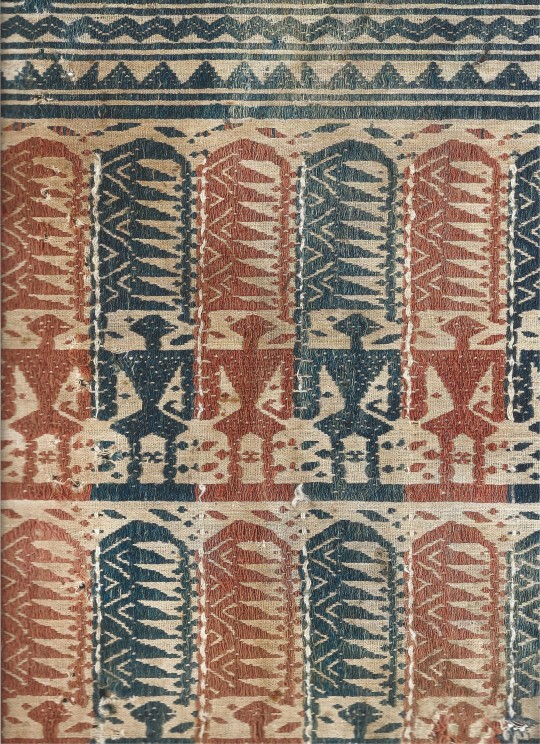
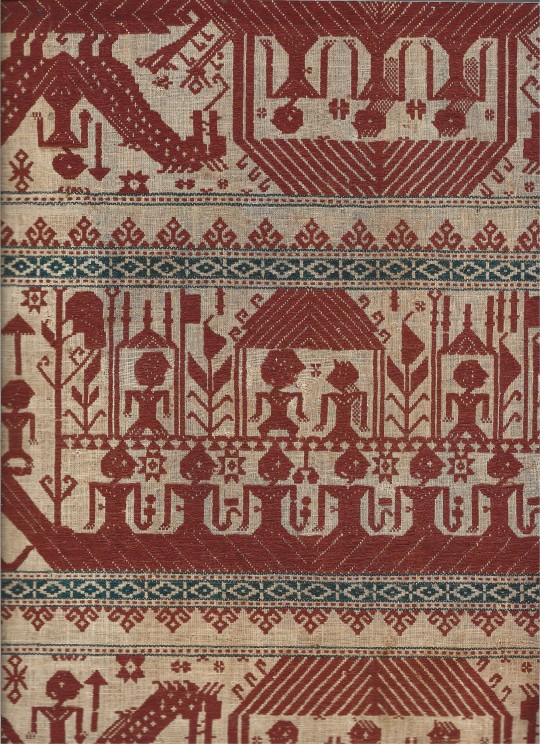

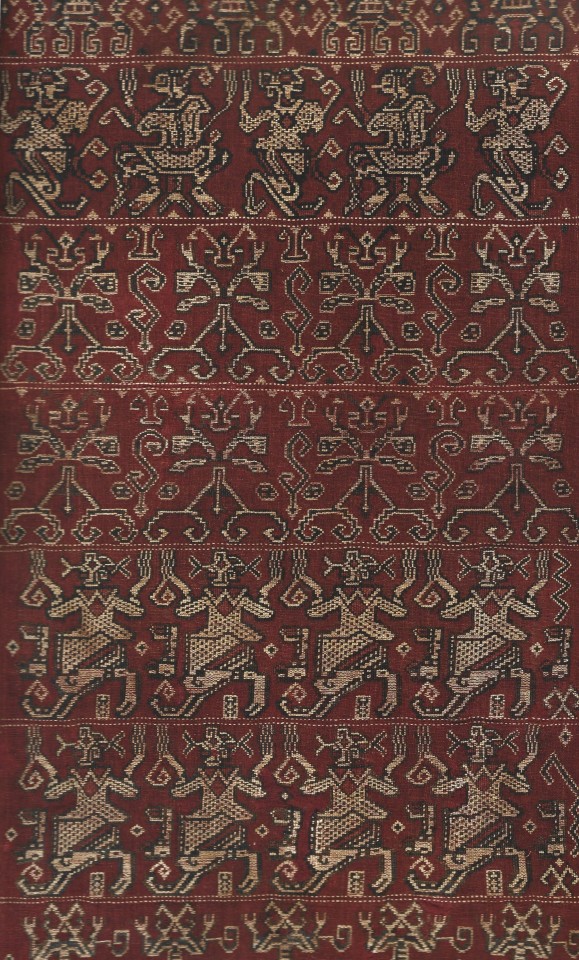
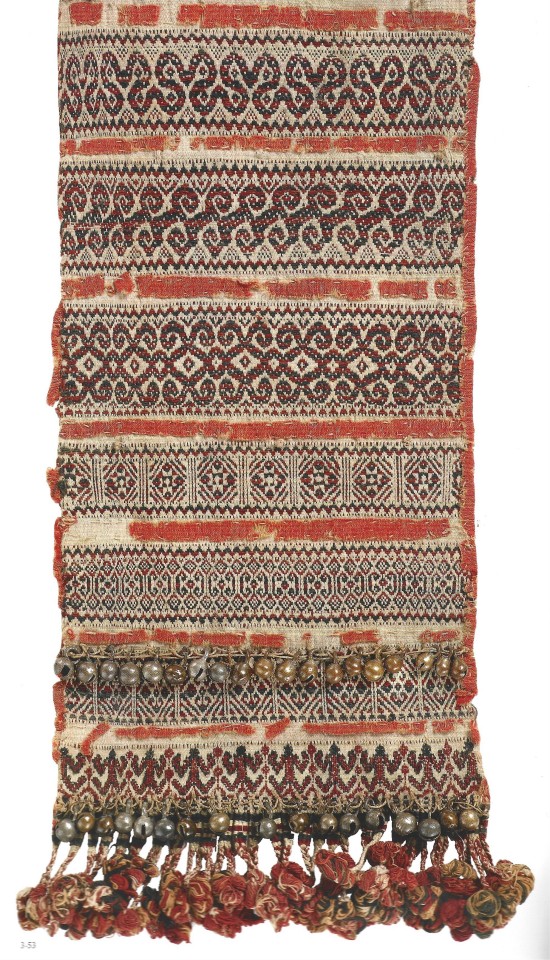


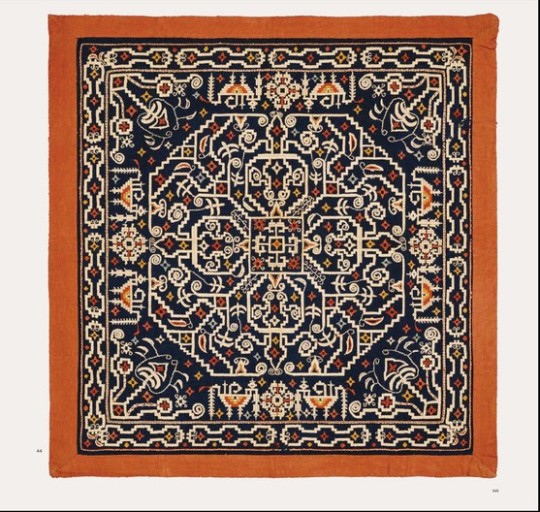
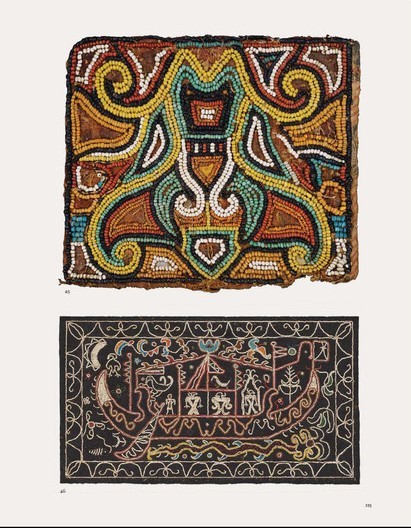
Textiles of Indonesia
The Thomas Murray Collection
Contributors: Lorraine Aragon, Joanna Barrkman, Chris Buckley, Kristal Hale, Valerie Hector, Janet Alison Hoskins, Itie van Hout, Eric Kjellgren, Fiona Kerlogue, Brigitte Khan Majlis, Robyn Maxwell, Thomas Murray, and Sandra Sardjono
Prestel, London 2021, 534 pages, 26,5x35cm, ISBN 9783791387659
€112,00
email if you want to buy [email protected]
Gathered over the course of four decades, the Thomas Murray collection of Indonesian textiles is one of the most important in the world. The objects comprise ritual clothing and ceremonial cloths that tell us much about the traditions of pre-Islamic Indonesian cultures, as well as the influences of regional trade with China, India, the Arab world, and Europe. As with the earlier volume, Textiles of Japan (Prestel, 2018), the book focuses on some of the finest cloths to come out of the archipelago, presenting each object with impeccable photographs. Geographically arranged, this volume pays particular attention to textiles from the Batak and the Lampung region of Sumatra, the Dayak of Borneo, and the Toraja of Sulawesi, as well as rare textiles from Sumba, Timor and other islands. Readers will learn about the intricate traditions of dyeing, weaving, and beading techniques that have been practiced for centuries. Original texts by international experts offer historical context, unspool the mysteries behind ancient iconography, and provide new insights into dating and provenance. At once opulent and scholarly, this book arrives at a moment of growing interest in Southeast Asian culture and carries the imprimatur of one of the art world's leading collectors.
02/11/23
#Textiles Indonesia#Thomas Murray Collection#Batak and Lampung region#Sumatra#Dayak Borneo#Toraja Sulawesi#Sumba textiles#Timor Textiles#Indonesian Textiles#textiles books#fashionbooksmilano
29 notes
·
View notes
Text
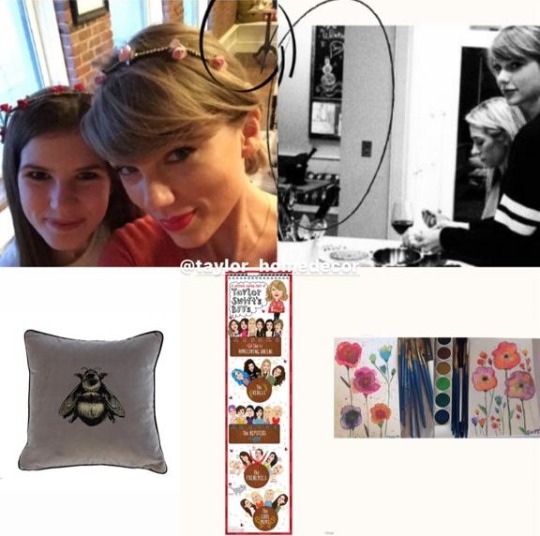
Valentine’s Day (with @bae-tay) | 2015 | Tribeca
2 X Timorous Beasties Silk Cushions - US $30,36
A @timorous_beasties pillow, a print @goryango did for Vanity Fair magazine and “the two water color flower paintings she painted and posted on Instagram this year displayed on a cork board with some fan art over her breakfast nook�� - thanks @amberlayne4 🫶🏻
More Timorous Beasties identified earlier, click here
#nook#kitchen#taylor swift#taylor swift home#taylor swift home decor#1989#1989 secret sessions#secret sessions#1989 taylor's version#tribeca#tribeca penthouse#tribeca apartment#nyc#nyc loft#taylor nation#taylurking#timorous beasties#pillow#frame#wallart#wall art#paintings#cushion#textilles#textiles#vanity fair#valentine's day
5 notes
·
View notes
Text
Thursday Postcard Hunt - ART: Crafts, Fabric Art, Textile
… is this week’s theme for Thursday Postcard Hunt. Postcard from Timor Leste back of card with textile info Timor-Leste, or East Timor, a Southeast Asian nation occupying half the island of Timor, is ringed by coral reefs teeming with marine life. Landmarks in the capital, Dili, speak to the country’s struggles for independence from Portugal in 1975 and then Indonesia in 2002. The iconic…
0 notes
Text
28.04.25 - Essay Planning
Investigate the universal appeal of natural forms in illustration
☆Be broad in subject
☆History of design
☆Arts and crafts
☆Art Nouveau
��Botticelli
Narrative of how we moved forward
Link To Artist Research
Why artists used the subject matter, reference their work and discuss a couple of their pieces
☆Contemporary artists – wallpaper textile print, print, pattern work - timorous beasties
☆Photocollage
☆William Morris
☆Georgia O’Keeffe
☆Sylvia Plath
Look at it as an extended piece of artist research that can feed into my work
Select an influence find how they can link to the essay, your own work and the other artists
0 notes
Text
A First-Timer’s Magical Journey Through Turkey – And How It Led Me to Timor-Leste
Turkey travel guide, best places in Turkey, Turkey e-visa, Istanbul to Cappadocia, Turkey tourism
The Moment I Fell in Love with Turkey
The call to prayer echoed over Istanbul’s skyline as I stood on the Galata Bridge, watching fishermen reel in their catch at sunset. The smell of simit (Turkish sesame bread) mixed with the salty Bosphorus air. In that moment, I knew Turkey would exceed all my expectations.
As a first-time visitor, every corner revealed new wonders – from the fairy chimneys of Cappadocia to the turquoise waters of Ölüdeniz. But my Turkish adventure took an unexpected turn when a chance meeting in a Pamukkale hot spring led me to my next destination: Timor-Leste.
My Can’t-Miss Turkey Experiences

1. Istanbul: Where Continents Collide
Must Do: Hagia Sophia at golden hour + underground Basilica Cistern tour
Food Hack: Skip the restaurants near Blue Mosque – head to Karaköy for authentic meze
Visa Tip: Applied for my Turkey e-visa 3 days before flying – approved in 15 minutes!
2. Cappadocia: More Than Just Balloons
Hidden Gem: Sunrise ATV tour through Rose Valley (cheaper than balloons)
Local Secret: Pottery kebab in Avanos’ cave restaurants
3. Ephesus & Pamukkale: Ancient Wonders
Pro Move: Arrive at Ephesus at 7:30 AM to beat crowds
Unexpected Bonus: Met a Timorese backpacker in Pamukkale’s thermal pools who convinced me to visit his country
The Turkey-to-Timor Connection
That chance meeting changed everything. Over çay (Turkish tea), my new friend Marcos showed me photos of:
Jaco Island – Timor’s answer to the Maldives
Dili’s Cristo Rei – a Christ statue with better views than Rio’s
Maubisse – mountain villages rivaling Turkey’s Black Sea region
“Our e-visa system is easier than Turkey’s,” he laughed. When I checked Timor-Leste’s portal, I discovered: ✅ 3-day processing (vs Turkey’s “instant” that sometimes isn’t) ✅ No stressful passport scan requirements ✅ Single-page application
Why Turkey Prepares You for Timor-Leste
Street Food Bravery
If you can handle Istanbul’s kokoreç (spicy offal wrap), Timor’s spicy tuna dishes will be easy
Bargaining Skills
Grand Bazaar haggling = perfect training for Dili’s Tais textile markets
Mountain Driving Confidence
Turkey’s winding Black Sea roads prepare you for Timor’s dramatic coastal routes
*My Turkey visa took 2 reapplications; Timor’s worked first try
Where to Next?
Turkey taught me that the best travels begin with good visas and open hearts. Now as I plan my return to Istanbul, I’m already dreaming of: ➔ Comparing Turkish and Timorese coffee ceremonies ➔ Watching sunsets over both the Bosphorus and Dili Harbor ➔ Using my new Timor-Leste e-visa for a longer adventure
Question for fellow travelers: What unexpected connections have you made on the road?
0 notes
Text
Im here to simply dump my world lore (because I need a place to write it down before I actually forget all of it)
I simply here to note down my OC world.And I think, since I am making a world with so many cultures, maybe a bit of feedback from people with the same cultures I used to build this fantasy world where my OC lives would help making it more accurate :)))
(The nations here will be inspired by real life countries, there are currently only 12 countries in this world)
The first nation I made is inspired by southeast Asia, this nation is known for their rich soil and perfect environment to grow a lot of food.They have 11 tribes, these 11 will be inspired by all the countries in Southeast Asia (info mainly on google) Brunei, Burma (Myanmar), Cambodia, Timor-Leste, Indonesia, Laos, Malaysia, the Philippines, Singapore, Thailand and Vietnam.But I want to mix in the Vietnam culture slightly more than other cultures, since I have a bit of an attachment to Vietnam, and it’s also because I have live there before.
The nation name, currently it is Pahadana, its only a placeholder so I might change it later on :)
Pahadana is blessed with fertile soil, tropical climates, and a vast network of rivers and lakes. Its rivers, particularly the Lúa River, are vital to agriculture and trade. Its vast rainforests, rice paddies, and tropical fruit groves support a diverse and flourishing economy.
Each tribe has its own distinct customs, dialects, and governance but all share a deep connection to nature and the land. The nation thrives on unity despite these differences. The tribes are often represented by the flora and fauna they protect and grow.
Brunaya (Inspired by Brunei) A coastal tribe that controls trade routes. They are known for their stunning palaces, elaborate clothing, and wealth accumulated from seafood and pearls. The Brunaya tribe has a monarch who governs with a focus on diplomacy.
Thuryan (Inspired by Myanmar/Burma) Known for their warrior traditions and deep spirituality. The Thuryan people practice powerful martial arts, and their monasteries serve as places of learning and inner peace.
Kambalya (Inspired by Cambodia) Rich in history and art, the Kambalya tribe excels in architecture, creating beautiful temples and shrines. They are deeply connected to ancestral spirits and maintain a reverence for nature through traditional herbalism.
Timoli (Inspired by Timor-Leste) A rugged tribe that resides in the mountains. Known for their strong independence and resilience, the Timoli are exceptional navigators and explorers, often leading expeditions into the wild lands surrounding the nation.
Indarno (Inspired by Indonesia) Famous for their diverse culture, the Indarno people are skilled at crafting intricate textiles and have mastery in the art of shadow puppetry. They are also renowned sailors and traders.
Laolai (Inspired by Laos) Known for their peaceful nature and devotion to Buddhist principles. The Laolai people live harmoniously with the land, practicing sustainable farming and thriving in their simple, serene lifestyle.
Malaya (Inspired by Malaysia) The Malaya people are known for their trade hubs, bustling cities, and dynamic culinary heritage. Their markets are full of spices, exotic fruits, and rare goods. They have a vibrant mix of cultures.
Suluk (Inspired by the Philippines) A tribal group of islanders famous for their intricate sea navigation. The Suluk people are skilled artisans, creating jewelry and carvings from coral and seashells. They live in harmony with the oceans, often diving to harvest resources from the deep.
Singdara (Inspired by Singapore) A prosperous tribe known for their architectural marvels and technology. Their cities are a blend of futuristic buildings and lush greenery. Singdara thrives on innovation, combining tradition with modernity.
Siamarai (Inspired by Thailand) Famous for their elaborate festivals, Siamarai are known for their elegance and refinement. The tribe is also famous for their martial arts and their mastery of dance, which they perform during religious and social ceremonies.
Vinhong (Inspired by Vietnam) The largest and most influential tribe in the nation, Vinhong has a strong agricultural tradition. The people grow rice, tea, and lotus flowers, and their culture is deeply intertwined with ancestor worship. Vinhong’s people are also known for their legendary dragon lore, storytelling, and martial traditions.
Economy and Trade
Agriculture is the backbone of the nation, with rice being the staple food grown in abundance.
Spice trade, seafood, textiles, and gemstones are also major exports.
The nation’s strategic location and rich resources make it a central hub for trade between the surrounding nations.
The influence of Vietnam would be present in the architecture (e.g., pagodas, ancient temples), festivals (e.g., Lunar New Year and ancestor worship), and daily life (e.g., rice farming, tea ceremonies). The Vinhong tribe’s traditions, including the cultivation of rice terraces and dragon dance performances, are seen as the cultural heart of Pahadana, though the other tribes participate in these rituals to varying degrees.
This is a rough outline of the nation’s history and structure I came up with, and I know it is very lacking, I will also have to come up with how the government works and develop specific aspects further, such as key historical events, religion, and mythology…
It would be much appreciated if you can tell me if I got the information about the cultures wrong, since I am afraid of accidental misinformation, especially when it comes to countries and its culture.Also, maybe you could also help me come up with better names (my naming skills sucks) and ideas for religion and mythology that exists in this world.
I sincerely thank you for your feedback and opinions about how I can build my world more accurately.It will help me a lot.
1 note
·
View note
Text
https://www.industryarc.com/Report/18785/south-east-asia-testing-inspection-certification-market?utm_source=tumblr&utm_medium=Reffaral&utm_campaign=Padma
South East Asia Testing, Inspection & Certification Market - Forecast(2024 - 2030)
The South East Asia TIC Market size is estimated to reach US$4.7 billion by 2030, growing at CAGR 4.82% during the forecast period 2024-2030. The growth of South East Asia TIC Market is majorly driven by increasing need for food testing and rising safety regulations and standards for the enhancement of medical device safety measure.
👉 𝗗𝗼𝘄𝗻𝗹𝗼𝗮𝗱 𝐒𝐚𝐦𝐩𝐥𝐞 𝐑𝐞𝐩𝐨𝐫𝐭 @ https://tinyurl.com/23euhbb5
South East Asia TIC Report Coverage
The “South East Asia TIC Market Report – Forecast (2024-2030)” by IndustryARC, covers an in-depth analysis of the following segments in the South East Asia TIC Market.
By Type: Outsourcing, In-house
By Types of Services: Testing Services, Inspection Services, Certification Services
By End Users: Agriculture, Automotive, Food, Consumers (textile, cosmetic, toys, apparel, furniture, stationary, hand tools), Medical & Life Science, Marine, Manufacturing, Building & Infrastructure, Industrial Equipment, Retail, Rail, E-Commerce, Meteorology, Others.
By Geography: Indonesia, Malaysia, Sinagpore, Philliphines, Thailand, Vietnam, Others (Myanmar, Laos, Cambodia, Brunei, Timor-Leste)
#South East Asia Testing#Inspection & Certification Market Share#Inspection & Certification Market Size#Inspection & Certification Market Forecast#Inspection & Certification Market Research#Inspection & Certification Market Treads#Inspection & Certification Market Application#Inspection & Certification Market Growth#Inspection & Certification Market Price
0 notes
Text
Artist Research - Timorous Beasties

Relevance
A suggestion from my lecturer was the creators Timorous Beasties, who are well known for their thought provoking works. On first glance they view as an aesthetically pleasing wallpaper, with designs that draw you in and lead your eye around the work. However, when viewed closer it can be seen that the work is not as innocent as it was assumed to be. This is something that I want to mimic within my work, presenting with one idea to then 180* that to something almost the opposite.

About
Timorous Beasties was established in Glasgow in 1990 by Alistair McAuley and Paul Simmons. To this day, the studio is a diverse operation and has emerged as a multi-award-winning, internationally acclaimed icon.
Timorous Beasties’ work showcases diversity of pattern, ranging from design that of the golden age of copperplate engraving (a time-honoured classic is the Thistle range; or Merian Palm superwide wallpaper) to examples of a more edgy nature. Yet, the studio fully engages a design discourse with textile's history by lending an aesthetic evolution to time-honoured motifs.
In 2004 Timorous Beasties unveiled their critically acclaimed Glasgow Toile: by reversing the pastoral context of toiles de Jouy, they transformed the device to create an modern urban vibe. The Hotch Blotch fabric series challenges a 1000-year old aesthetic by placing contrast within the structure of damask pattern to show the beauty of splatters, drips and blotches. Hunting Toile and Urban wallpapers mark a combination of 18th-century Chinoiserie groupings, Rococo swirls and Victorian silhouette paper cuts to create a contemporary ornamental textiles pattern.
The art critic John Ruskin related a universal connection between nature, art and society. Timorous Beasties share a similar world view, where plants, animals and society are visually inseparable. They are devoted to how that impacts as pattern design in our daily experience of furnished spaces, from one-bedroom flats to country villas, to the halls of civic and government buildings, departure lounge backdrops, boutique enclaves, restaurants, and hotels.
1 note
·
View note
Text
Culture of East Timor
The culture of East Timor reflects numerous cultural influences, including Portuguese, Roman Catholic, and Malay, on the indigenous Austronesian cultures in East Timor.
People & Culture
Society
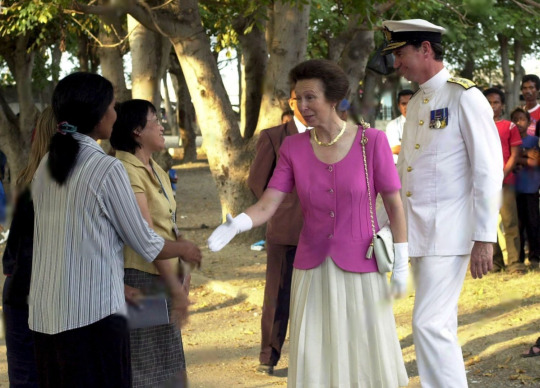
Princess Anne accompanied by her husband Rear Admiral Tim Laurence, shakes hands with East Timor Social Workers in Dili, Indonesia, on 27 September 2005.
Timorese are incredibly hospitable, gregarious and some of the friendliest you’ll ever encounter. Celebrations held at national and community levels are many and vibrant. Timorese society is also conservative and traditional with a strong focus on family, the community and religion.
Population

A crowd waving national flags in Dili after East Timor gained its independence, May 20, 2002.
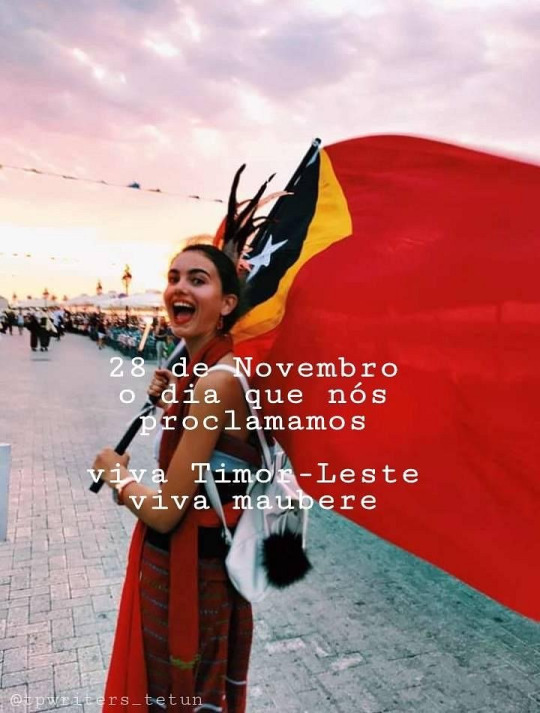
With a population of around 1.3 million, Timorese are linked closely. At the same time the country’s identitiy is composed of many indigenous groups, each with its own language and cultural practices. Tetun is the largest of these accounting for approximately 25% of the population. They live around Dili, Suai and Viqueque. Mambae make up a further 10% and are found in the central mountains. Other groups include the Kemak, Bunak and Fataluku amongst others, each accounting for 5% or less.
Language
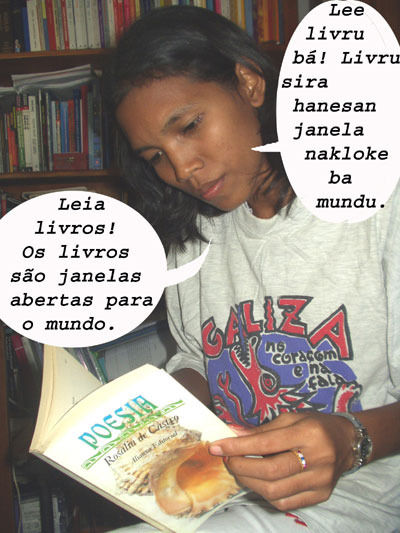
Campaigning for reading in Timor-Leste.
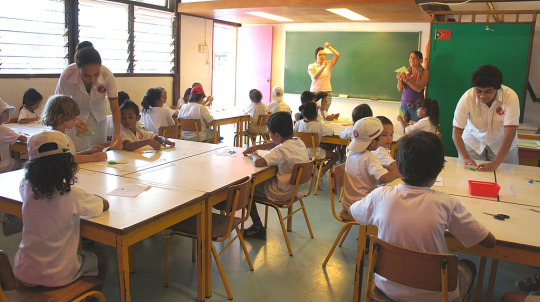
The Portuguese School of Díli
Timor-Leste (East Timor) has many spoken languages reflecting past migration, colonialism and other occupation. Tetun and Portuguese languages have been given official status, with Indonesian and English considered working languages. Another fifteen or more indigenous languages also are spoken.
Settlement
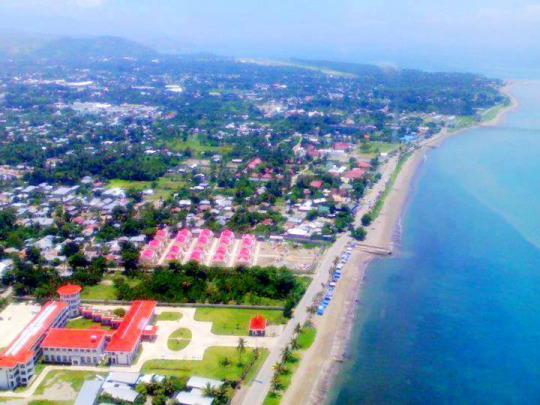
Dili- Capital
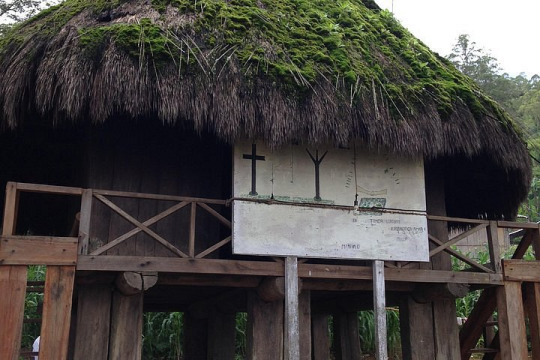
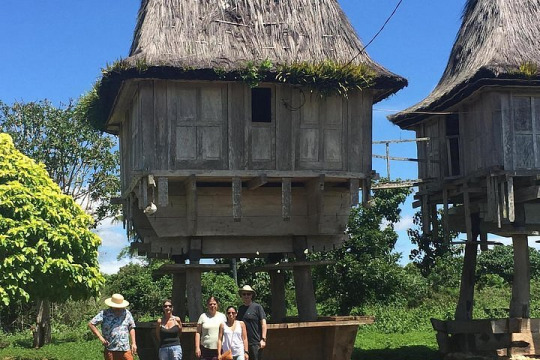
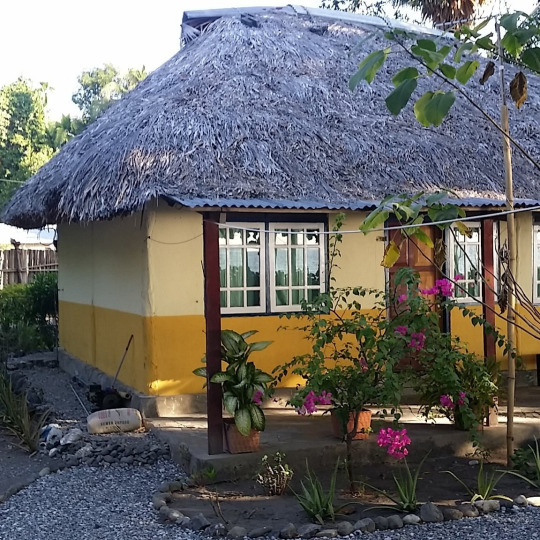
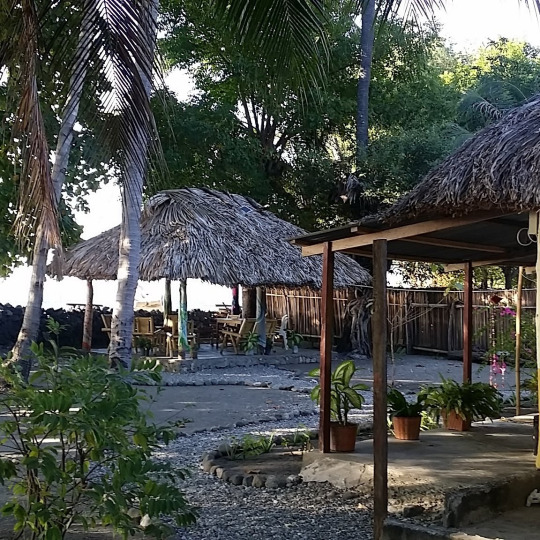
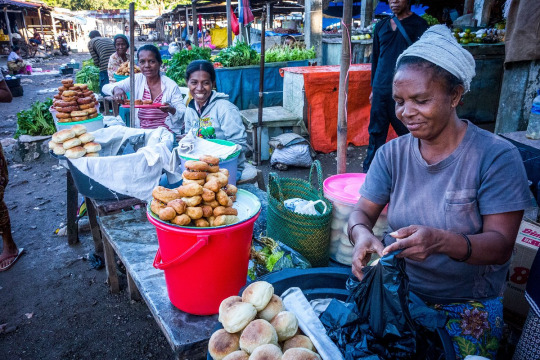
Timorese mostly reside in small towns and remote villages
The capital of Dili is a modern developing city offering a wide range of services and amenities for residents and visitors. While many Timorese are drawn to the capital seeking employment, 70% still live in rural areas. These Timorese mostly reside in small towns and remote villages and practice a subsistence fishing and farming lifestyle.
Religion
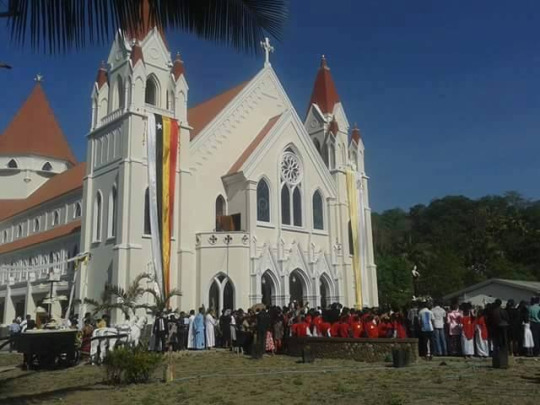
Igreja da Imaculada Conceição church, in Viqueque
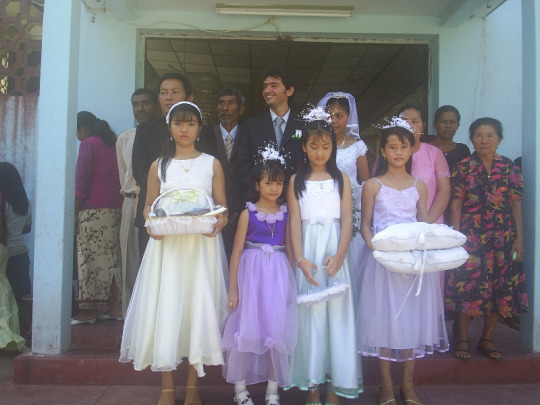
An East Timorese wedding in 2006
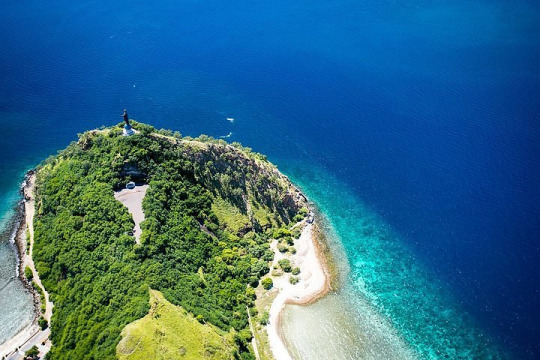
Cristo Rei Dili Timor Leste
Around 90% of Timorese identify as Roman Catholic and the remainder mostly as Protestant, Muslim and Hindu. In spite of this, animism continues to be a persuasive force in most peoples’ everyday lives. Observing the way animist and religious beliefs are seamlessly blended is one of the interesting aspects of holidaying in this country.
Culture
Timorese cultural heritage is multi-layered – a fascinating combination of traditional Timorese, Portuguese, Chinese and Indonesian influences. This permeates their local architecture, cuisine, clothing styles and artistic endeavors.
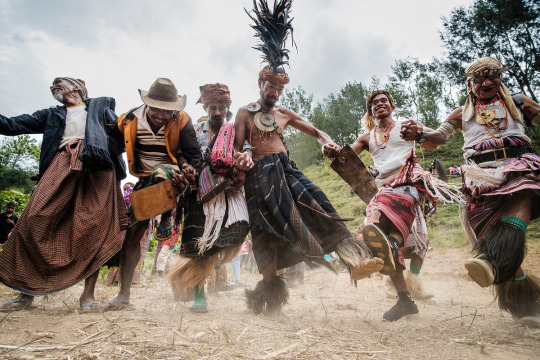
Timorese culture continues to evolve in local arts and handicrafts, as well as in dance and music. Cultural motifs, both old and modern, are incorporated into the design of tais – hand-woven textiles, basket work and wood carving.
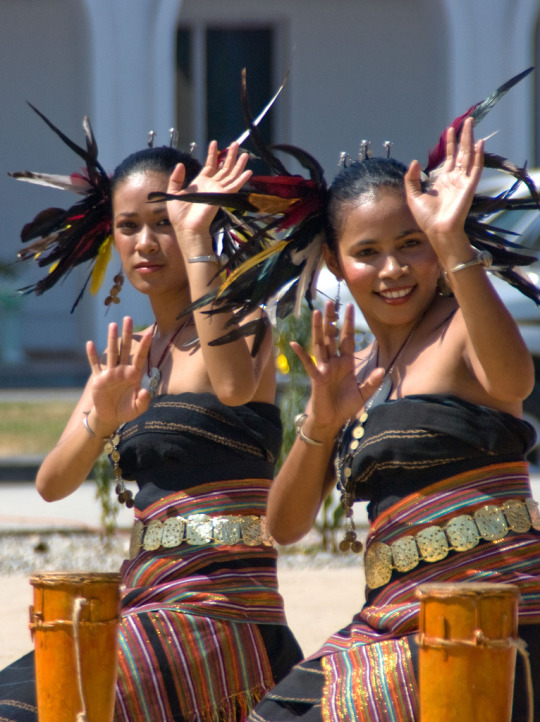
Traditional Timorese dancers
Cultural groups still perform traditional dances and songs and also are entertaining in new ways. Talented Timorese bands and dance groups perform in local venues and at festivals.
Architecture
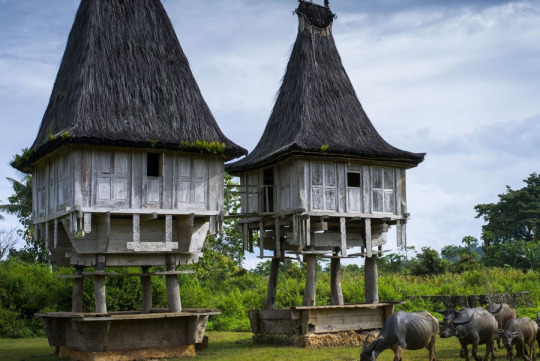
There is a fair amount of architectural variety in Timor-Leste (East Timor), since each ethnic group have their own traditions and customs. However, nearly all architecture has been constructed of wood so few buildings have lasted to the present and much of what stands today is from the past century other than a few structures.
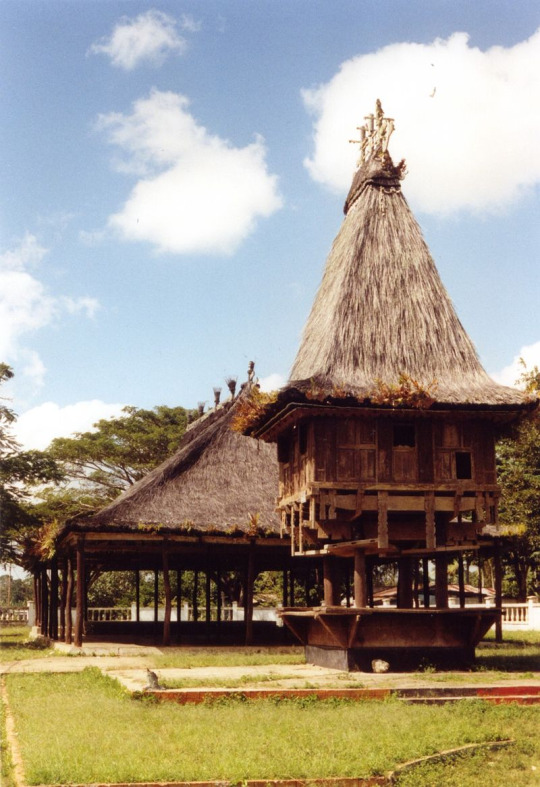
Sacred house (lee teinu) in Lospalos
Early, and still the most traditional, architecture in Timor-Leste is the totem house. Examples of these constructions are found all across the country but vary from one region and ethnic background to another. Uma lulik also mean spirit houses because they hold the spirits of ancestors of the family that owns it. There were rebuilt every ten years to help renew the community’s connection to its forebears and its land.
Also, there are few Portuguese-styled buildings in Timor-Leste, coming from the Portuguese legacy. Most of these buildings in this style are churches or buildings in the capital of Dili. Following on Portuguese tradition of building from stone, concrete, and other more solid substances, today the country has a fair amount of modern buildings made primarily from concrete and glass.
Sport

National sports of East Timor (Timor-Leste) is Football.
Timorese participate in a wide range of sports, including football which they are extremely passionate about.
East Timor has taken part in multiple international sporting events., such as the 2003 Southeast Asian Games held in Vietnam in 2003. In the 2003 ASEAN Paralympics Games, also held in Vietnam, East Timor won a bronze medal. In the Athens 2004 Olympic Games, six athletes participated in three sports: athletics, weightlifting and boxing). East Timor won three medals in Arnis at the 2005 Southeast Asian Games. East Timor was one of the competing nations in the first Lusophony Games, winning a bronze medal in the women’s volleyball competition. On 30 October 2008, East Timor earned their first international points in a FIFA match with a 2–2 draw against Cambodia.
Culture of East Timor - Wikipedia

Timorese children, East Timor, by United Nations Photos
132 notes
·
View notes
Text
Exploring Atauro: A Hidden Gem

When I first set foot on the breathtaking island of Atauro, located in the captivating country of Timor-Leste, I felt an overwhelming sense of excitement and curiosity.This hidden gem offers a unique blend of untouched natural beauty, rich cultural heritage, and a sense of adventure that is truly unparalleled. As a passionate traveler and adventurer, I knew I had stumbled upon a place that would forever leave its mark on my soul.
Getting there and the Best Time to Visit:
Atauro is nestled in the crystal-clear waters of the Timor Sea, just a short boat ride away from Dili, the capital of Timor-Leste. Launching from Dili, the boat ride gives you a chance to marvel at the deep blue of the Timor Sea, with Atauro Island slowly growing larger on the horizon. The island enjoys a tropical climate, with warm temperatures throughout the year. The best time to visit is during the dry season, which typically spans from May to October. This period offers sunny days, calm seas, and optimal conditions for exploring the island's underwater wonders. However, the wet season (November to April) brings lush greenery, dramatic waterfalls, and the opportunity to witness the raw power of nature.
Where to Stay:
Accommodation options in Atauro range from rustic beachside bungalows to eco-friendly resorts. For a truly immersive experience, I highly recommend staying at one of the local guesthouses or homestays. These establishments provide an authentic glimpse into the island's culture and traditions, while also offering comfortable and welcoming accommodations.
What to Do:
Atauro is a haven for thrill-seekers and nature enthusiasts. There's plenty to do, both underwater and on land. Let me take you through some options: - Diving: The waters surrounding the island are teeming with vibrant coral reefs, an abundance of marine life, and awe-inspiring underwater drop-offs. Explore the depths of the ocean, swim alongside majestic sea turtles, and discover the hidden treasures that lie beneath the surface. - Hiking: There's an array of hiking trails that lead to panoramic viewpoints, secluded beaches, and charming villages. Strap on your hiking boots and immerse yourself in the island's rugged beauty as you traverse through lush forests, encounter exotic bird species, and breathe in the invigorating mountain air.
Where to Eat:
One of the highlights of my Atauro journey was indulging in the local cuisine. The island's coastal location means that seafood takes center stage in many dishes. Don't forget to try the traditional dish of ikan saboko, a mouthwatering grilled fish served with rice and vegetables.
Sights and Tours:
Immerse yourself in Atauro's rich cultural heritage by visiting traditional villages where locals warmly welcome visitors with open arms. Engage in conversations with the island's friendly inhabitants, learn about their traditional way of life, and gain insights into their deep-rooted beliefs and customs. For a truly unforgettable experience, embark on a dolphin and whale-watching tour. The sight of these magnificent creatures is sure to leave an indelible mark on your heart.
Nightlife and Shopping:
While Atauro is not known for its vibrant nightlife, you can still enjoy peaceful evenings by the beach, stargazing, and listening to the soothing sounds of the ocean. When it comes to shopping, Atauro offers an array of unique handcrafted souvenirs, including intricately woven textiles, artisanal pottery, and traditional wood carvings. Bring home a piece of Atauro's rich cultural heritage as a cherished memento of your unforgettable journey.
Your Atauro adventure awaits!
So, fellow adventurers, if you yearn for a travel experience that goes beyond the ordinary, pack your bags, set your sights on Atauro, and allow this captivating island to awaken your sense of wonder, ignite your spirit of exploration, and leave you forever changed. Read the full article
0 notes
Photo


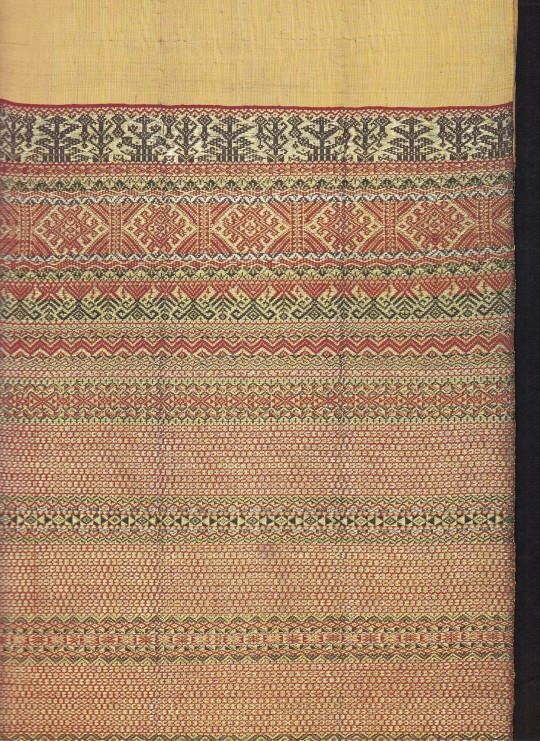





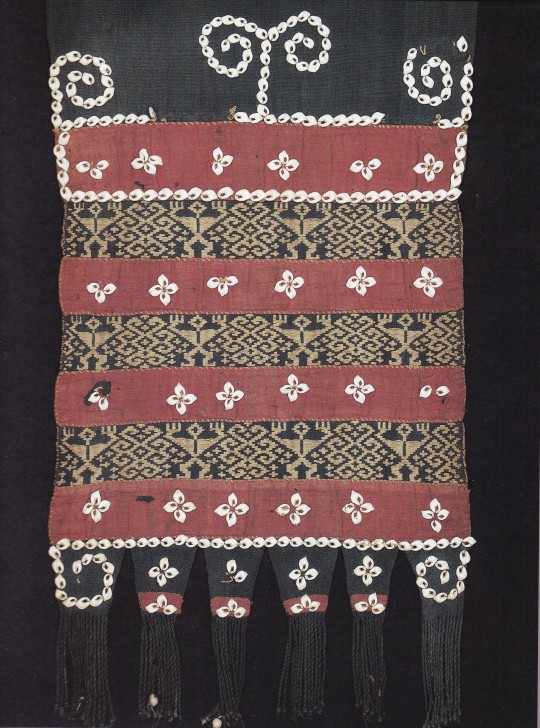

Thread and Fire
Textiles and Jewellery from The Isles of Indonesia and Timor
Linda S. McIntosh, The Francisco Collection
River Books, Bangkok 2019, 344 pages, 265 colour illustrations, ISBN 978 616 4510 35 7
euro 56,00
email if you want to buy: [email protected]
Thread and Fire - Textiles and Jewellery from the Isles of Indonesia and Timor is a fascinating journey through the centuries-old trade networks that developed across a group of archipelagos along the equator. Of the 18,000 islands, more than 900 are permanently settled by over 360 ethnic groups, speaking 700 languages and dialects. For centuries this vast and rich environment favoured local and regional exchanges, and it was only later that people visited from afar. New connections integrated these archipelagos with the distant civilizations of continental Asia: first India, later China and from the 13th century onwards, the Islamic world. Finally, with the arrival of Europeans in the early 16th century, global trade and connections grew rapidly. Spices and forest and sea products were the focus of foreign interests, and textiles were the currency for their acquisition. These imported textiles, complemented with ornaments and jewellery, soon became part of the region’s social fabric, indispensable items of gift and exchange, essential markers for the enactment of ceremonies, rites of passage and signifiers of rank and prestige.Thread and Fire explores and illustrates these ancient connections and traditions through Indonesian and Timorese textiles, regalia and jewellery from the Francisco Capelo Collection, assembled over a 20-year period and now part of the permanent collection of Casa Asia-Coleção Francisco Capelo in Lisbon.
23/05/20
orders to: [email protected]
ordini a: [email protected]
twitter:@fashionbooksmi
instagram: fashionbooksmilano, designbooksmilano tumblr: fashionbooksmilano, designbooksmilano
#Indonesian textiles#Timor textiles#Francisco Capelo Collection#Java#Sulawesi#Bali#Sumatra#Jewellery#indonesian jewellery#textiles books#textile design inspirations#fashion books#fashionbooksmilano
9 notes
·
View notes
Photo
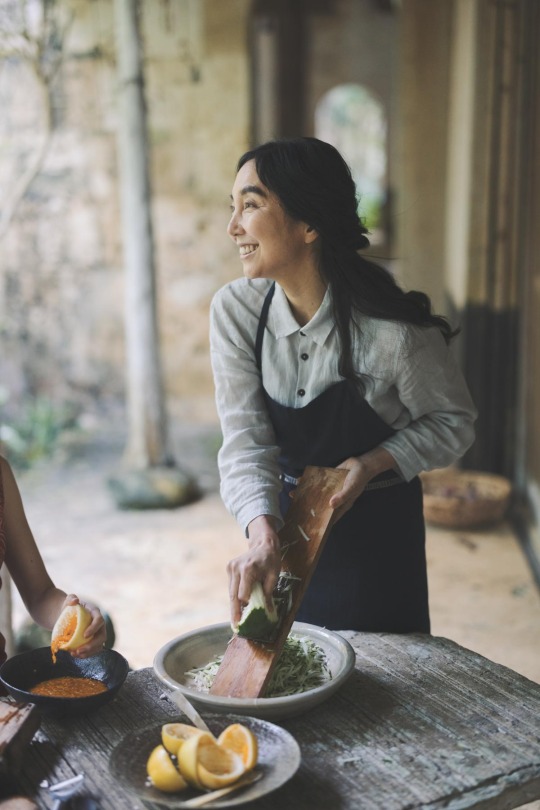

ミルコットンリネンのエプロン
インド産のコットンリネンを使ったエプロン。 肩紐、もしくは腰紐に西ティモールの手織りリボンを使った。 一本づつ、綿を紡ぎ、草木染めにし、 西ティモールの女性達によって織られた紐は、 柄も太さも長さも織り手によって違うので、 腰紐か肩紐に、色をあわせて選んだ。 この愛すべき小さな手仕事をティモールテキスタイルを主催する 岡崎真奈美さんのご協力によって商品化することができたことを嬉しく思う。
¥22,000 Photograph by Shuhei Tonami
4 notes
·
View notes
Photo

Valentine’s Day 2015 (with @bae-tay) | Tribeca
Napoleon Bee Cushion by Timorous Beasties (SOLD OUT)
See many more pillows Taylor has from this brand, here
#taylor swift#Taylor Swift home#Taylor Swift home decor#timorous beasties#valentine's day#tribeca#kitchen#nyc#pillow#textiles
12 notes
·
View notes
Text
20.03.25
Essay planning
Investigate the universal appeal of natural forms in illustration
Be broad in subject
History of design
Arts and crafts
Art Nouveau
Botticelli
Narrative of how we moved forward
Link To Artist Research
Why artists used the subject matter, reference their work and discuss a couple of
their pieces
Contemporary artists – wallpaper textile print, print, pattern work - timorous beasties
Photocollage
William Morris
Georgia O’Keeffe
Sylvia Plath
Look at it as an extended piece of artist research that can feed into my work
Select an influence find how they can link to the essay, your own work and the other
artists
0 notes
Photo

Timorous Beasties Fabric - Bloomsbury Garden
162 notes
·
View notes




